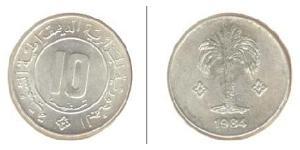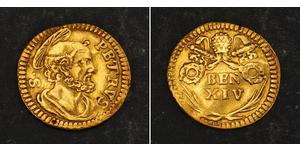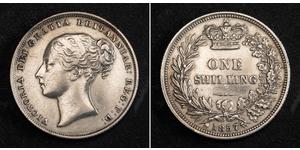[ 3804] GREEK CITY OF VELIA IN SOUTHERN ITALY - Fourree Stater (19mm, 6.95 gm.) Struck 300-270 B.C. Reference: cf. Williams 527ff. Head of Athena left, wearing Attic helmet decorated with Φ and bounding griffin. YEΛHTΩN (in the exergue), Lion prowling right, caduceus. Provided with certificate of authenticity. CERTIFIED AUTHENTIC by Sergey Nechayev, PhD - Numismatic Expert Velia is the Italian (and Latin) name of the ancient town of Elea located on the territory of the comune of Ascea, Salerno, Campania, Italy in a geographical sub-area named Cilento. Originally founded by the Greeks as Hyele in ancient Magna Graecia around 538–535 BC, it is best known as the home of the philosophers Parmenides and Zeno of Elea, as well as the Eleatic school of which they were a part. The site of the Acropolis of ancient Elea, once a promontory (castello a mare meaning castle on the sea) and now inland, was renamed in the Middle Ages Castellammare della Bruca. Geography The town is situated close to the Tyrrhenian coast in a hill zone nearby Marina di Casalvelino and Marina di Ascea, on a road linking Agropoli to the southern Cilentan Coast. Its population is mainly located in the plain by the sea (surrounding the southern part of the ancient ruins) and in the hill zones of Enotria, Bosco and Scifro. Velia also had a railway station on the Naples-Salerno-Reggio Calabria line, closed at the end of 1970s. History According to Herodotus: in 545 BC Ionian Greeks fled Phocaea, in modern Turkey, besieged by the Persians. After some wanderings (8 to 10 years) at sea, they stopped in Reggio Calabria where, probably, they were joined by Xenophanes who was at the time at Messina, and then moved North along the coast and founded the town of Hyele (Greek: Ὑέλη), later renamed Ele (Ἔλη), and then, eventually, Elea (Ἐλέα). The location is nearly at the same latitude as Phocaea. (Cca. 1' 20" North) Elea was not conquered by the Lucanians, but eventually joined Rome in 273 BC and was included in ancient Lucania. Ruins of Velia Remains of the city walls, with traces of one gate and several towers, of a total length of over three miles, still exist, and belong to three different periods, in all of which the crystalline limestone of the locality is used. Bricks were also employed in later times; their form is peculiar to this place, each having two rectangular channels on one side, and being about 1.5 in. square, with a thickness of nearly 4 in. They all bear Greek brick-stamps. There are some remains of cisterns on the site, and, various other traces of buildings. Payment & Shipping: Will accept payments via PayPal. = MM_contentVersion;
}
else if (navigator.userAgent && navigator.userAgent.indexOf("MSIE")>=0 && (navigator.appVersion.indexOf("Win") != -1)) {
document.write('\n');
document.write('on error resume next\n');
document.write('MM_FlashCanPlay = ( IsObject(CreateObject("ShockwaveFlash.ShockwaveFlash." & MM_contentVersion)))\n\n');
}
if (MM_FlashCanPlay) {
document.write('');
document.write(' ');
document.write(' ');
document.write(' ');
document.write(' ');
document.write(' ');
document.write(' ');
document.write(' ');
document.write(' ');
document.write(' ');
document.write(' ');
}
else {
document.write(' ');
document.write(' ');
document.write(' This Vendio Gallery is best viewed with Macromedia Flash Player 6or higher. ');
document.write(' Click here to get the latestMacromedia Flash Player. ');
document.write(' ');
document.write(' ');
document.write(' ');
}
//--> Your browser does not support JavaScript. To view this page, enable JavaScript if it is disabled or upgrade your browser.
Mehr...

|
Beigetragen von:
anonymous 2015-08-19 |
Similar Coin Groups

10 Franc Zweites Kaiserreich (1852-1870) ...
Diese Gruppe hat 18 Münzen / 17 Preise
Add coin to this group
2025-05-24
- New coin is added to 1/2 Scudo Vatikanstadt Gold
1/2 Scudo Vatikanstadt Gold
Diese Gruppe hat 5 Münzen / 5 Preise
⇑
ITALIA Vaticano - Stato Pontificio Benedetto XIV. 1740-1758. 1/2 Scudo romano 1741, Roma. 0.91 g. Berman 2735. Fr. 233. BB+.
2025-05-24
- New coin is added to 1 Shilling Vereinigtes Königreich von Großbritannien und Irl ...
1 Shilling Vereinigtes Königreich von Großbritannien und Irl ...
Diese Gruppe hat 99 Münzen / 92 Preise
⇑
1857, Great Britain, Queen Victoria. Beautiful Silver Shilling Coin. Cleaned XF+ Mint Year: 1857 Denomination: Shilling Reference: KM-434.1 ($285 in XF!). Condition: Cleaned/polished, otherw ...
Das könnte Sie auch interessieren:















-300-150-IxfBwcI07O0AAAEoNYX7lLA7.jpg)






